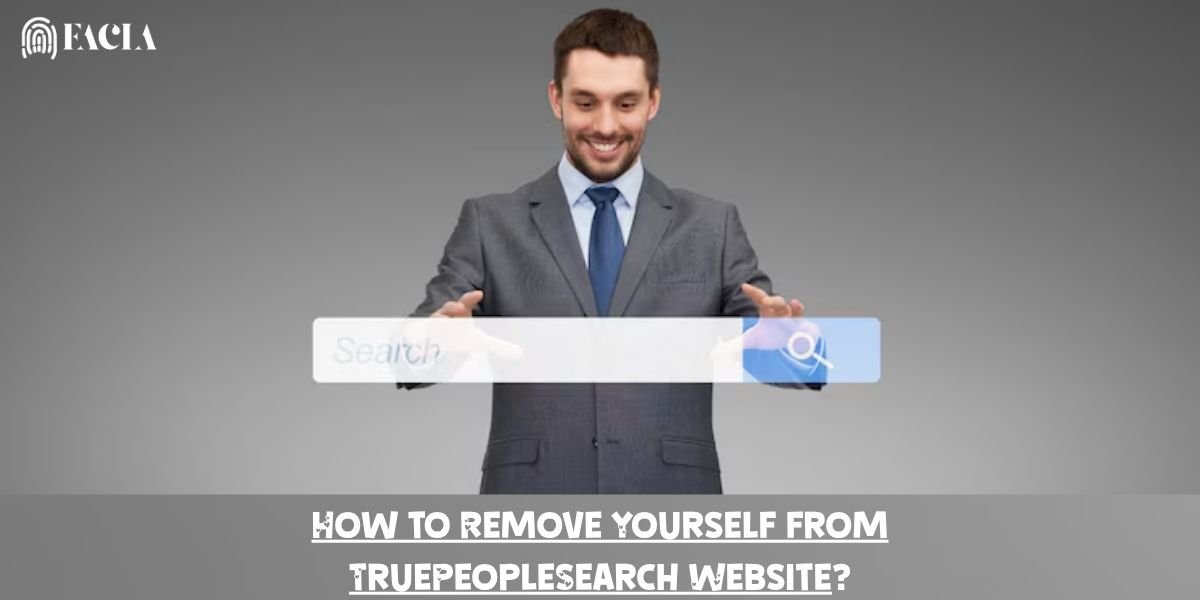Have you ever typed your name into a search engine and been startled to see your personal details on a site like TruePeopleSearch? You’re not alone. Seeing your home address, phone number, and even relatives publicly available can feel invasive. If you’re wondering “how to remove yourself from TruePeopleSearch,” this guide walks you through the process step-by-step. It’s a proactive move toward reclaiming your privacy.
What Data Does TruePeopleSearch Collect and Display?
TruePeopleSearch, like other data broker websites, compiles personal information from public records and makes it accessible to anyone. These details may include:
- Full name
- Past and current addresses
- Phone numbers
- Email addresses
- Relatives and associates
Data is typically sourced from property deeds, court filings, voter registrations, and social media. This means information you thought was private, or old details you’ve forgotten about, can end up displayed.
According to a 2023 study from Privacy Rights Clearinghouse, over 65% of Americans have identifiable information listed across multiple data broker platforms. This widespread exposure can lead to several risks:
- Telemarketing and spam calls
- Targeted phishing scams
- Identity theft
- Personal safety risks
It’s unsettling to think about, but taking action is entirely possible.
Social Security Number Data Breach: How Hackers Get In and What You Can Do
Understanding TruePeopleSearch’s Opt-Out Policy
The good news is that TruePeopleSearch offers a free opt-out process. This means you can officially request to have your information removed from their site. The company is required to honor these requests under California’s CCPA and similar data privacy laws. This gives you a legal standing to demand your data be taken down.
However, there’s a catch: because they refresh data from public records, your details may resurface. This isn’t uncommon across data broker sites. It simply means that regular monitoring and repeated opt-outs may be necessary. The company is not legally obligated to notify you if your data reappears. Managing your personal data can feel like a game of whack-a-mole—but each time you take action, you’re strengthening your privacy.
Step-by-Step Guide: How to Remove Yourself from TruePeopleSearch (Manual Opt-Out)
Step 1: Access the TruePeopleSearch Opt-Out Page
Navigate to their removal page by visiting TruePeopleSearch Opt-Out.
Step 2: Submit Your Email and Complete CAPTCHA
- Consider using an alternate or temporary email to help prevent receiving unwanted spam later.
- Select the checkbox to indicate you agree with their terms and conditions.
- Complete the CAPTCHA to prove you’re not a bot.
- Click “Begin Removal.”
Step 3: Search for Your Profile
- Enter your full name and city/state.
- Click “Search” to see a list of matching profiles.
Step 4: Identify and Select Your Record
- Verify the correct profile by checking addresses and relatives.
- Click “View Details”.
- Scroll down and click “Remove This Record.”
Step 5: Confirm via Email
- Look for a confirmation email from TruePeopleSearch.
- Click the verification link inside to finalize your request.
- If the email doesn’t appear in your inbox, be sure to look in your spam or junk folder.
Tips for a Smooth Removal Process
- Allow 24–72 hours for removal.
- Repeat the process for multiple listings if necessary.
- After a few days, search your name again to confirm removal.
Common Challenges When Removing Info from TruePeopleSearch
Reappearance of Your Information
Due to database refreshes, your data might show up again. If it does, simply repeat the opt-out steps. This is a common issue highlighted by EFF.
Handling Multiple or Incorrect Listings
If there are multiple or incorrect entries, each profile must be removed individually. It’s best to remove rather than try to correct inaccurate records.
If Your Request is Ignored
- Retry the process carefully.
- If unresolved, use the support contact on their website to report the issue.
Using Automated Tools and Services to Remove Your Data
While manually opting out of TruePeopleSearch is a great start, it’s just one website. Your personal data could be sitting on dozens, even hundreds, of other data broker platforms. This is where automated tools and services become incredibly valuable, especially if you’re serious about broad online privacy.
Overview of Privacy Services
Privacy tools like DeleteMe, Privacy Bee, and OneRep specialize in removing your data from multiple brokers, including TruePeopleSearch. They act as your privacy advocate. These services understand the complex and often confusing opt-out procedures of various sites, doing the heavy lifting for you. For understanding the broader landscape of data brokers, resources like the Federal Trade Commission (FTC) can provide valuable insight.
Benefits of Automated Removal
The biggest, most undeniable benefit of using an automated service is the sheer amount of time and effort it saves you.
- Save time and effort
- Cover 400+ data broker sites
- Get ongoing monitoring and re-removal
This ensures your efforts to learn how to remove info from truepeoplesearch extend to a much wider network, providing comprehensive protection.
Cost vs. DIY
- DIY: Doing it yourself is free but time-consuming.
- Automated Services: These services typically cost around ~$10–20/month, but are highly efficient.
According to a New York Times report, users often report improved data privacy and peace of mind using these services. The investment can be worthwhile if you value your time and comprehensive protection.
How to Monitor Your Personal Data After Removal
Why Monitoring Is Essential
Just like cleaning your house, data removal isn’t permanent. Set reminders to check every few months.
Recommended Tools and Strategies
You don’t need fancy gadgets to monitor your data.
- Google Alerts: Create Alerts to track mentions of your name and email address online. Google Support provides a comprehensive guide on how to do this easily. You can find that guide directly on Google Support.
- Manual Searches: Perform manual searches every quarter.
- Privacy Scans: Use Privacy Scans from tools like DeleteMe and Privacy Bee.
Additional Tips to Protect Your Privacy Online
Adjust Social Media Privacy Settings
- Set Facebook, Instagram, and other accounts to Private or Friends Only
- Limit visible contact info and birthday
Check out Facebook Privacy Basics for step-by-step privacy customization.
Reduce Your Digital Footprint
- Don’t overshare personal info online
- Avoid signing up with real info on non-essential websites
More guidance is available on Privacy Rights Clearinghouse.
Use Alias Emails and Phone Numbers
- Use tools like DuckDuckGo Email Protection for alias emails
- Use Google Voice for an alternate number
Frequently Asked Questions (FAQs)
How long does TruePeopleSearch take to remove my info?
After you successfully submit your request and click the crucial confirmation link in their email, TruePeopleSearch typically processes the removal within 24 to 72 hours (that’s one to three business days).
Can I remove info about my family members?
Generally, no. Removal requests are limited to your own personal data; you can’t submit for others. Each family member would need to complete their own separate opt-out request for their specific information if they wish to have it removed.
Is removal permanent or temporary?
Removal from TruePeopleSearch is often temporary. As new public records become available, or if they acquire new datasets, your information might reappear on their site. It’s a good practice to check back every few months and repeat the process if needed.
What if my info appears on other people search sites?
TruePeopleSearch is just one of many people search sites and data brokers out there. If you find your information on other websites (like WhitePages, Spokeo, or Intelius), you will need to visit each of those specific websites and follow their unique opt-out procedures. This can be time-consuming, which is why many people consider using automated services that handle multiple removals at once. Learn more about managing your data across multiple sites from resources like the Consumer Reports guide on data removal.
Conclusion
Knowing “how to remove yourself from TruePeopleSearch” is a powerful step toward securing your personal privacy. While it takes time and diligence, the benefits—reduced exposure, fewer scams, and peace of mind—are well worth it.
Stick to the manual steps if you’re budget-conscious, or use an automated tool for a broader sweep. Most importantly, keep monitoring your digital footprint regularly. Your personal data deserves protection—and now, you know exactly how to do it.
Discover More Blogs:
What Is a Suspicious Activity Report (SAR) in Banking and Finance?





